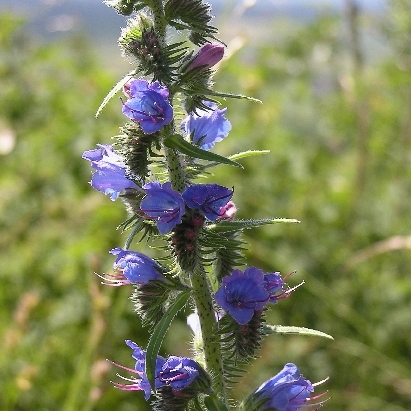Annual, biennial or perennial, sometimes monocarpic, herbs or shrubs, ± hispid with bulbous-based hairs. Infl. usually paniculate, composed of bracteate cymes, sometimes up to several m high. Calyx 5-lobed, divided nearly to base, usually accrescent. Corolla narrowly to broadly funnelform, usually blue to purple, sometimes white or pink; limb oblique and ± zygomorphic; base of tube with minute scales, tufts of hair or with a membrane; throat lacking scales. Stamens unequal, exserted or partly included, inserted below middle of corolla tube. Style exserted; stigma capitate or 2-fid. Nutlets ovoid, slightly 3-angled, erect, rugose; base flat.
Cor funnelform, irregular, the upper side evidently the longer, the lobes unequal; fornices wanting, the throat open; filaments slender, ± unequal, some or all strongly exsert; gynobase flat or nearly so; nutlets ± roughened, attached at base, the large scar sometimes surrounded by a low rim; style exsert; annual to perennial herbs or subshrubs with blue to purple or red (white) fls in a series of helicoid, bracteate cymes. 50, Old World.


